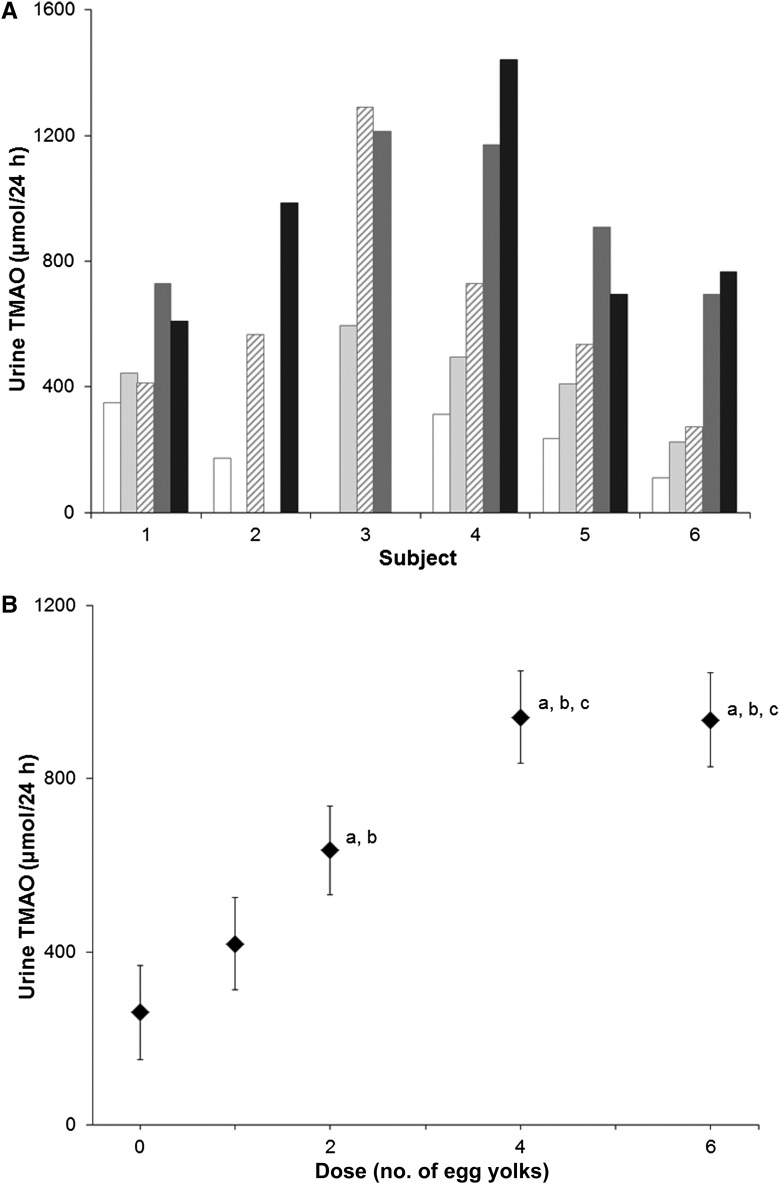FIGURE 3.
Amount of TMAO in 24-h urine collections after egg doses. Six healthy volunteers (subjects) consumed a standardized low-choline diet on the day before each of 5 randomly assigned doses of 0, 1, 2, 4, or 6 egg yolks. Subjects were fed the egg dose for breakfast, followed by the same standardized low-choline lunch, dinner, and snacks as consumed the previous day. Each egg dose delivered 1.14 mmol (119 mg) total choline. Therefore, 0, 1, 2, 4, and 6 egg doses provided 0, 1.1, 2.3, 4.6, and 6.8 mmol (0, 119, 238, 476, and 714 mg) total choline, respectively, in addition to the standardized diet. A: Amount of TMAO in 24-h urine collections after egg doses. Urine was collected for 24 h on the day of each egg dose, and the concentration of TMAO was measured by using liquid chromatography and electrospray ionization–isotope dilution mass spectrometry as described in Subjects and Methods. The amount of TMAO was calculated from the concentration and volume of urine collected in 24 h for each dose for each subject. Some samples were not included in the figure because the amount of creatinine excreted per 24 h fell below 75% of the mean amount in all 24-h urine collections for that subject, suggesting that the individual sample was not a complete 24-h collection. TMAO values for the different egg doses are represented by bars patterned as follows: 0 eggs, white; 1 egg, light gray; 2 eggs, diagonal hatch; 4 eggs, dark gray; and 6 eggs, black. B: Mean (±SE) amount of TMAO excreted into urine in 24 h. Data from A were used to calculate the amount of TMAO in 24-h urine collections for all subjects (n = 6) for each dose. A repeated-measures regression model with urine TMAO as the response variable and the egg dose as the predictor was used. Variable estimates (±SE) resulting from the model were used to make pairwise comparisons for the various dietary choline intakes (egg dosages). aP < 0.05, different from 0 eggs; bP < 0.05, different from 1 egg; cP < 0.05, different from 2 eggs. TMAO, trimethylamine-N-oxide.

